The following is a partial timeline of the history of golf.

The Royal Liverpool Golf Club is a golf club in Wirral in Merseyside, England. It was founded in 1869 on what was then the racecourse of the Liverpool Hunt Club. It received the "Royal" designation in 1871 due to the patronage of the Duke of Connaught of the day, one of Queen Victoria's younger sons, Robert Chambers and George Morris were commissioned to lay out the original course, which was extended to 18 holes in 1871. Harry Colt, one of the world's leading golf course architects, redesigned the course early in the 20th century, and it has since been tweaked periodically, mainly as a response to advances in equipment.

John Matthew Shippen Jr. was an American golfer who competed in several of the early U.S. Opens. Born in Washington D.C., he was the son of a former slave and Presbyterian minister, John Shippen Sr. and Eliza Spotswood Shippen, and is believed to be the first American-born golf professional.
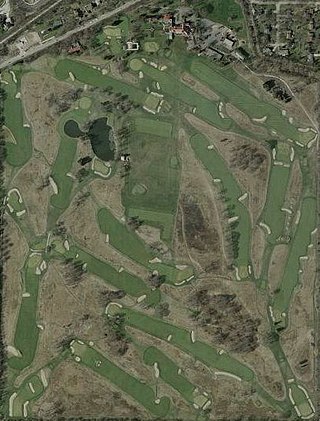
Chicago Golf Club is a private golf club in the central United States, located in Wheaton, Illinois, a suburb west of Chicago. The oldest 18-hole course in North America, it was one of the five founding clubs of the United States Golf Association (USGA) in 1894. It was listed on the National Register of Historic Places in 2020.
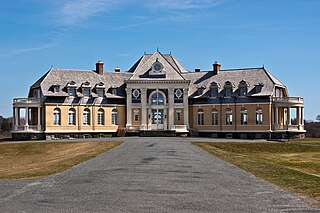
Newport Country Club, is a historic private golf club in the northeastern United States, located in Newport, Rhode Island. Founded 130 years ago in 1893, it hosted both the first U.S. Amateur Championship and the first U.S. Open in 1895.

Oakland Hills Country Club is a private golf club in the central United States, located in Bloomfield Township, Michigan, a suburb northwest of Detroit. It consists of two 18-hole courses designed by Donald Ross: the South Course (1918) and the North Course (1923).

The Country Club, located in Brookline, Massachusetts, is the oldest golf-oriented country club in the United States. It holds an important place in golf history, as it is one of the five charter clubs that founded the United States Golf Association, and has hosted numerous USGA tournaments including the 1913 U.S. Open won by then-unknown Francis Ouimet. Although the club has 1300 members, it is known for its exclusivity.

The Lambton Golf and Country Club is a private golf and tennis club in Toronto, Ontario, Canada. The golf club was established by Albert William Austin in 1902. The golf club is presently members with Golf Canada, and the United States Golf Association., and has hosted a number of competitions including the Canadian Open, and the Canadian Amateur Championship.
Essex Golf & Country Club is a private, 18-hole championship golf course located in LaSalle, Ontario, south of Windsor.

Charles Blair Macdonald was a major figure in early American golf. He built the first 18-hole course in the United States, was a driving force in the founding of the United States Golf Association, won the first U.S. Amateur championship, and later built some of the most influential golf courses in the United States, to the extent that he is considered the father of American golf course architecture. He is a member of the World Golf Hall of Fame.

East Lake Golf Club is a private golf club 5 miles east of downtown Atlanta, Georgia. Established in 1904, it is the oldest golf course in the city. East Lake was the home course of golfer Bobby Jones and much of its clubhouse serves as a tribute to his accomplishments.
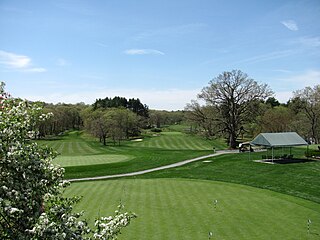
Brae Burn Country Club is a golf course located in West Newton, Massachusetts. Designed by Donald Ross, Brae Burn has hosted seven USGA Championships, including the 1919 U.S. Open, and 1928 U.S. Amateur. Brae Burn is most noted for its diabolical greens, and classic layout.

Glamorganshire Golf Club is located in Lower Penarth in the Vale of Glamorgan, Wales, 7.3 miles south west from the capital city of Cardiff and is one of the oldest golf clubs in Wales. The club was founded by the Earl of Plymouth.

St. Louis Country Club (SLCC) is a country club located in Ladue, Missouri, a suburb of St. Louis. It is recognized by the United States Golf Association (USGA) as one of the first 100 Clubs in America.
The 1892 Open Championship was the 32nd Open Championship, held 22–23 September at Muirfield in Gullane, East Lothian, Scotland. Harold Hilton, an amateur, won the Championship by three strokes from another amateur John Ball and two professionals: Sandy Herd and Hugh Kirkaldy. This was the second win by an amateur following Ball's victory in 1890.
Minneapolis Golf Club is a golf club located in St. Louis Park, Minnesota, a suburb of Minneapolis, Minnesota. Designed by Willie Park, Jr. and Donald Ross, the Minneapolis golf course opened in 1916. The club hosted the U.S. Amateur in 1950 as well as the PGA Championship in 1959, which Bob Rosburg won.
The 1895 U.S. Open was the first U.S. Open, held on Friday, October 4, at Newport Golf Club in Newport, Rhode Island. Horace Rawlins won the inaugural event, two strokes ahead of runner-up Willie Dunn.
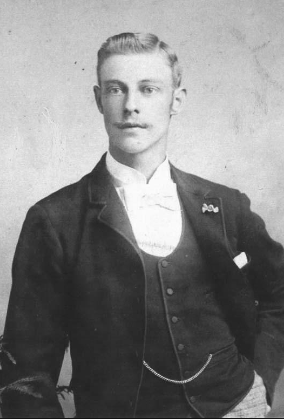
William Henry Tucker, Sr. was an American professional golfer and golf course architect of English birth. Tucker placed seventh in the 1896 U.S. Open, held 18 July at Shinnecock Hills Golf Club in Southampton, New York.
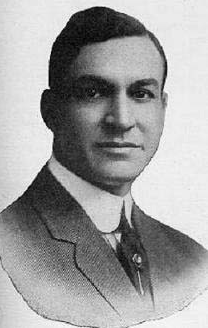
Walter George Fovargue was an American professional golfer, club maker, and golf course architect. In 1916, he was one of the founding members of the PGA of America. He won the 1917 Northwest Open and finished fourth in the 1912 Western Open. He finished T13 in the 1906 and 1916 U.S. Opens and played in the inaugural PGA Championship in 1916 but lost in the first round.

Conwy Golf Club in Conwy, Wales was officially opened as Caernarfonshire Golf Club in 1890. The links course on the Morfa Conwy peninsula was designed by Jack Morris. The championship course is 6,910 yards (6,320 m) long with a par of 72.













